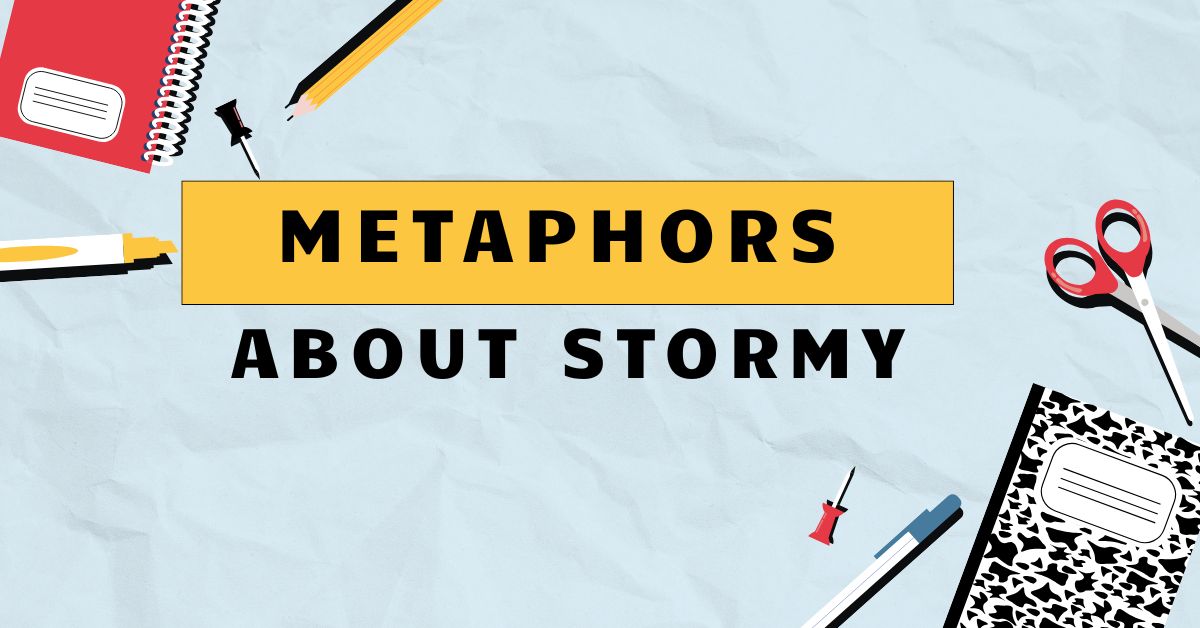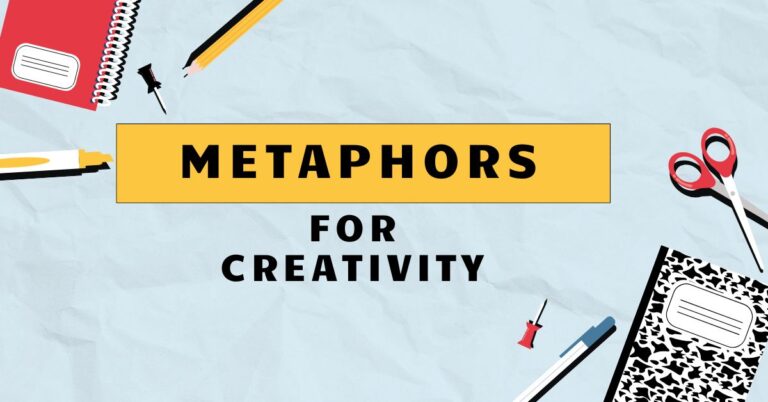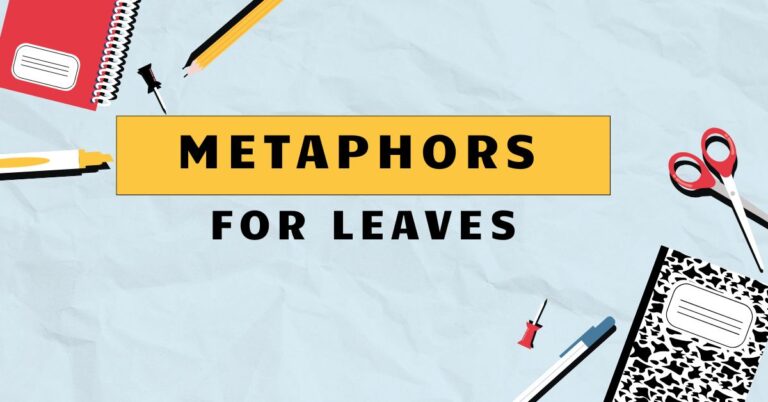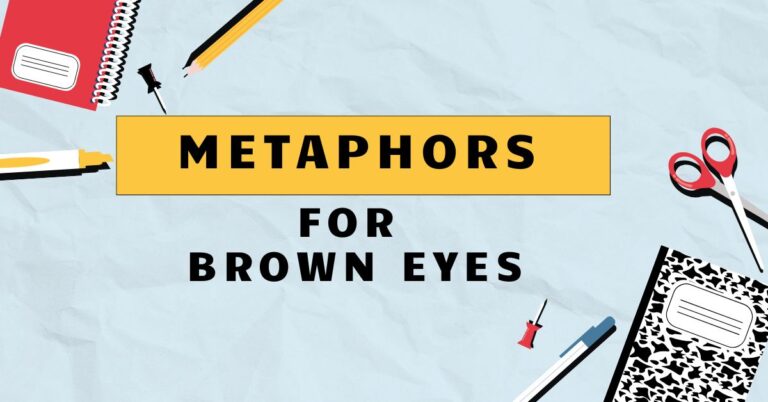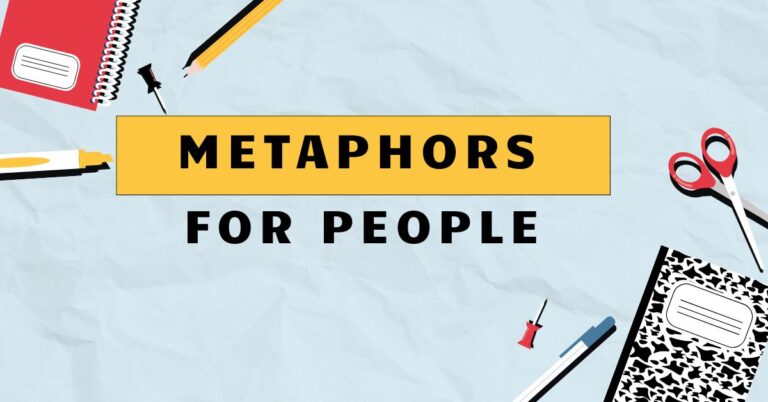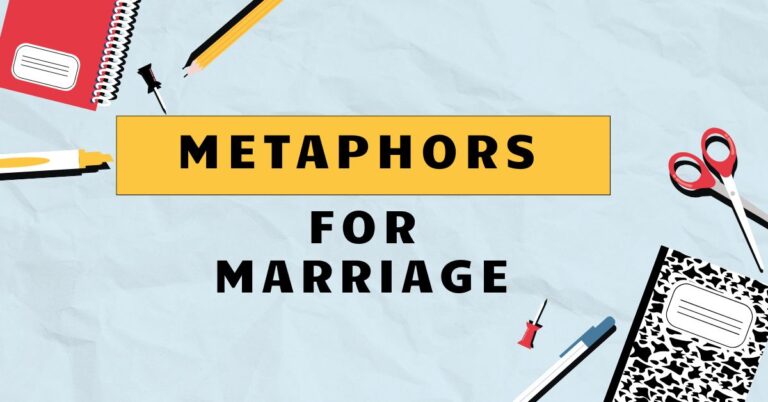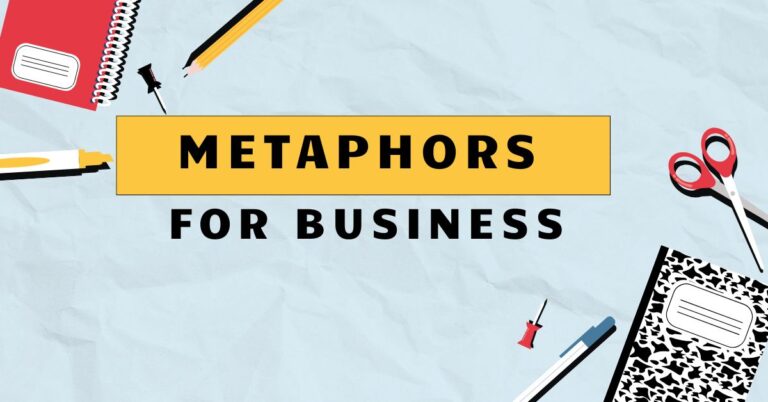40 Stormy Metaphors: Mastering Figurative Language in English
Metaphors are powerful tools in the English language, allowing us to convey complex ideas and emotions in vivid and relatable ways. When we use storms as metaphors, we tap into a rich vein of imagery associated with turbulence, intensity, and transformation.
Understanding these metaphors is crucial for interpreting literature, poetry, and everyday conversations, as well as enhancing your own expressive abilities. This article will guide you through the intricacies of storm metaphors, providing definitions, examples, usage rules, and practice exercises to help you master this fascinating aspect of figurative language.
Whether you’re an English language learner or a seasoned writer, this guide will equip you with the knowledge and skills to harness the power of storm metaphors effectively.
Table of Contents
- Definition of Storm Metaphors
- Structural Breakdown of Storm Metaphors
- Types and Categories of Storm Metaphors
- Examples of Storm Metaphors
- Emotional Storms
- Social and Political Storms
- Personal Struggle Storms
- Creative and Intellectual Storms
- Usage Rules for Storm Metaphors
- Common Mistakes with Storm Metaphors
- Practice Exercises
- Exercise 1: Identifying Storm Metaphors
- Exercise 2: Creating Storm Metaphors
- Exercise 3: Analyzing Storm Metaphors in Literature
- Advanced Topics in Storm Metaphors
- Frequently Asked Questions (FAQ)
- Conclusion
Definition of Storm Metaphors
A metaphor is a figure of speech that describes an object or action in a way that isn’t literally true, but helps explain an idea or make a comparison. Storm metaphors use the imagery of storms—including elements like rain, wind, thunder, lightning, and associated concepts such as chaos, destruction, and cleansing—to represent non-literal ideas, emotions, or situations.
These metaphors draw on the common understanding of storms as powerful, transformative, and often destructive forces to add depth and impact to language.
The function of a storm metaphor is to create a vivid and relatable image in the reader’s or listener’s mind, allowing them to better understand or connect with the abstract concept being described. By associating a complex emotion or situation with the tangible experience of a storm, the metaphor makes it easier to grasp the intensity, impact, and potential aftermath of that emotion or situation.
Storm metaphors can be used in a variety of contexts, from literature and poetry to everyday conversation and political discourse.
Storm metaphors are classified under the broader category offigurative language, specifically as a type ofconceptual metaphor. Conceptual metaphors are underlying cognitive structures that influence how we think and talk about abstract concepts.
In the case of storm metaphors, the underlying conceptual metaphor might be “EMOTIONS ARE NATURAL FORCES” or “CONFLICT IS A STORM.” This framework helps us understand why we naturally use storm imagery to describe intense emotional experiences or turbulent social situations.
Structural Breakdown of Storm Metaphors
Storm metaphors typically consist of two main elements: thetenorand thevehicle. The tenor is the subject or concept being described, while the vehicle is the storm imagery used to describe it.
The effectiveness of a storm metaphor depends on the clear and compelling connection between the tenor and the vehicle. The reader or listener should be able to easily recognize the similarities between the abstract concept and the concrete image of a storm.
The structure of a storm metaphor can vary depending on the context and the desired effect. Sometimes, the metaphor is explicitly stated using words like “is” or “like” (e.g., “Her anger was a raging storm”).
Other times, the metaphor is implied, with storm imagery woven into the description without a direct comparison (e.g., “The winds of change swept through the city”). Regardless of the specific structure, the key is to create a strong and evocative connection between the tenor and the vehicle.
The power of a storm metaphor often lies in its ability to evoke multiple senses and emotions. The imagery of dark clouds, crashing thunder, and torrential rain can create a sense of foreboding, chaos, and intensity.
At the same time, the aftermath of a storm—the clearing skies, the fresh air, the sense of renewal—can represent hope, healing, and transformation. By carefully selecting and arranging these elements, writers and speakers can create powerful and nuanced storm metaphors that resonate deeply with their audience.
Types and Categories of Storm Metaphors
Storm metaphors can be categorized based on the type of situation or emotion they are used to describe. Here are some common categories:
Emotional Turmoil
These metaphors use storm imagery to describe intense emotional states such as anger, grief, fear, or anxiety. The storm represents the overwhelming nature of the emotion and its potential to disrupt one’s inner peace.
Social Unrest
These metaphors use storm imagery to describe periods of social or political upheaval, such as revolutions, protests, or economic crises. The storm represents the chaos, conflict, and uncertainty that characterize these periods.
Personal Challenges
These metaphors use storm imagery to describe difficult or challenging experiences in one’s personal life, such as illness, loss, or financial hardship. The storm represents the obstacles and hardships that one must overcome.
Creative Inspiration
These metaphors use storm imagery to describe the process of creative inspiration, particularly the intense and sometimes chaotic energy that fuels artistic expression. The storm represents the surge of ideas, emotions, and insights that drive the creative process.
Political Upheaval
These metaphors use storm imagery to depict periods of significant political change, instability, or conflict. The storm serves as a representation of the turbulent forces at play, the disruption of the existing order, and the potential for both destruction and renewal.
Examples of Storm Metaphors
Here are some examples of storm metaphors, organized by category:
Emotional Storms
This table illustrates how storm imagery is used to describe various intense emotional states, highlighting the connection between the abstract emotion and the concrete image of a storm.
| Metaphor | Explanation |
|---|---|
| Her grief was a torrential downpour, soaking her soul. | The intensity of her grief is likened to heavy, overwhelming rain. |
| Anger surged through him like a thunderclap. | A sudden burst of anger is compared to the loud, startling sound of thunder. |
| Fear gripped her heart like a chilling blizzard. | The overwhelming nature of fear is compared to a severe, cold snowstorm. |
| His anxiety was a constant drizzle, wearing him down. | Persistent anxiety is likened to a steady, relentless rain. |
| She weathered the storm of her emotions with quiet strength. | The act of enduring and overcoming emotional challenges is compared to surviving a storm. |
| A tempest of rage consumed him. | The overwhelming nature of rage is compared to a violent storm. |
| Her sadness was a dark cloud hanging over her. | Prolonged sadness is likened to a heavy, ominous cloud. |
| He was caught in a whirlwind of despair. | The disorienting and overwhelming nature of despair is compared to a swirling wind. |
| The storm inside her finally broke, and she wept. | The release of pent-up emotions is compared to the breaking of a storm. |
| His heart was a battlefield during the emotional storm. | The internal conflict caused by intense emotions is compared to a battle during a storm. |
| Her joy erupted like a sunbeam after a storm. | A sudden burst of joy is compared to the appearance of sunlight after a storm. |
| The weight of her worries felt like a looming thunderstorm. | Anticipation of anxiety is compared to an approaching thunderstorm. |
| His words were like lightning, sharp and cutting. | Critical or hurtful words are compared to the sharp, piercing nature of lightning. |
| She felt battered by the winds of her own self-doubt. | The damaging effect of self-doubt is compared to being struck by strong winds. |
| The storm of grief left her feeling empty and drained. | The aftermath of grief is compared to the depleted feeling after a storm. |
| He found calm in the eye of the emotional hurricane. | Finding peace amidst emotional turmoil is likened to being in the calm center of a hurricane. |
| Her love was a sheltering tree in the midst of his storm. | Support and comfort during a difficult time is compared to a safe place during a storm. |
| The storm clouds of depression began to gather again. | The return of depression is compared to the gathering of storm clouds. |
| He unleashed a torrent of anger upon them. | A sudden outburst of anger is compared to a heavy downpour. |
| She navigated the turbulent waters of her emotions. | The act of managing and understanding emotions is compared to navigating a stormy sea. |
| His hope flickered like a candle in a storm. | The fragility of hope is compared to a candle flame in a storm. |
| The emotional storm left a trail of destruction in its wake. | The impact of intense emotions is compared to the damage left after a storm. |
| She was a lighthouse guiding him through the storm of his despair. | Providing guidance and support during a difficult time is compared to a lighthouse during a storm. |
Social and Political Storms
This table provides examples of how storm metaphors are used to describe social and political events, capturing the sense of upheaval, conflict, and transformation inherent in these situations.
| Metaphor | Explanation |
|---|---|
| The winds of change are sweeping through the nation. | Significant social or political shifts are compared to strong winds. |
| A storm of protest erupted in the streets. | A sudden and widespread demonstration is compared to a violent storm. |
| The political landscape is a turbulent sea. | The instability and unpredictability of politics are compared to a stormy ocean. |
| The economic crisis was a devastating hurricane. | The destructive impact of an economic downturn is compared to a hurricane. |
| The revolution was a thunderous storm that shook the foundations of society. | A radical social or political change is compared to a powerful and disruptive storm. |
| A tempest of controversy surrounded the new law. | Intense disagreement and debate are compared to a violent storm. |
| The nation weathered the storm of the civil war. | The act of enduring and surviving a period of intense conflict is compared to weathering a storm. |
| The storm clouds of war were gathering on the horizon. | The increasing threat of war is compared to the approach of a storm. |
| The scandal unleashed a torrent of criticism. | A sudden and overwhelming wave of disapproval is compared to a heavy downpour. |
| The winds of populism are blowing across the globe. | The increasing influence of populist movements is compared to strong winds. |
| The social fabric was torn apart by the storm of division. | The damaging effect of social conflict is compared to the tearing apart of fabric. |
| The protests were a lightning rod for public anger. | The protests served as a focal point for widespread discontent, similar to how a lightning rod attracts lightning. |
| The government struggled to navigate the storm of economic uncertainty. | The difficulty of managing a period of economic instability is compared to navigating a stormy sea. |
| The storm of misinformation clouded the truth. | The obscuring effect of false or misleading information is compared to storm clouds. |
| The peace talks offered a glimmer of sunshine after the storm of conflict. | The hope for peace after a period of conflict is compared to the appearance of sunshine after a storm. |
| The election was a perfect storm of political factors. | A convergence of circumstances that create a significant event is compared to a perfect storm. |
| The old regime was swept away by the hurricane of revolution. | The complete overthrow of a political system is compared to a hurricane. |
| The debate raged like a wildfire, fueled by the winds of passion. | An intense and rapidly spreading argument is compared to a wildfire fueled by wind. |
| The new policy faced a barrage of criticism from all sides. | A heavy and continuous attack of disapproval is compared to a barrage. |
| The nation emerged from the storm of recession stronger and more resilient. | The recovery from an economic downturn is compared to emerging stronger after a storm. |
| The political climate was as volatile as a summer thunderstorm. | The unpredictable and rapidly changing nature of politics is compared to a summer thunderstorm. |
| The seeds of discontent sprouted into a storm of rebellion. | The gradual growth of dissatisfaction into open revolt is compared to seeds growing into a storm. |
| The community rallied together to rebuild after the storm of the natural disaster. | The collective effort to recover from a disaster is compared to rebuilding after a storm. |
Personal Struggle Storms
This table illustrates the use of storm metaphors to describe personal challenges and struggles, highlighting the resilience and determination required to overcome them.
| Metaphor | Explanation |
|---|---|
| He is battling a personal storm of illness. | The struggle with illness is compared to fighting a storm. |
| She weathered the storm of her divorce with grace. | Enduring and overcoming the challenges of divorce are compared to weathering a storm. |
| He was caught in a financial whirlwind. | The overwhelming and disorienting nature of financial problems is compared to a whirlwind. |
| She navigated the turbulent waters of her career. | Managing the challenges and uncertainties of a career is compared to navigating a stormy sea. |
| He emerged from the storm of addiction a stronger person. | Overcoming addiction and becoming stronger as a result is compared to emerging from a storm. |
| The storm of grief left her feeling lost and alone. | The isolating and disorienting effect of grief is compared to being lost in a storm. |
| He faced the storm of adversity with unwavering courage. | Facing challenges with bravery and determination is compared to facing a storm. |
| She found solace in the eye of her personal hurricane. | Finding peace and comfort amidst personal turmoil is compared to being in the calm center of a hurricane. |
| He was battered by the winds of self-doubt. | The damaging effect of self-doubt is compared to being struck by strong winds. |
| She rebuilt her life after the storm of her past. | Reconstructing one’s life after overcoming past challenges is compared to rebuilding after a storm. |
| He found strength in the calm after the storm. | Finding resilience and peace after overcoming challenges is compared to the calm after a storm. |
| She was a beacon of hope in his darkest storm. | Providing hope and guidance during a difficult time is compared to a beacon during a storm. |
| He learned to dance in the rain of his troubles. | Finding joy and resilience amidst difficulties is compared to dancing in the rain. |
| She weathered the storm of criticism with resilience. | Enduring and overcoming criticism with strength is compared to weathering a storm. |
| He emerged from the storm a changed man. | Undergoing a significant transformation as a result of overcoming challenges is compared to emerging from a storm. |
| She faced the tempest of her fears with determination. | Facing fears with courage and resolve is compared to facing a tempest. |
| He used his experiences to help others navigate their own storms. | Using personal experiences to guide others through their challenges is compared to helping them navigate storms. |
| She found peace after the storm had passed. | Finding tranquility and resolution after overcoming difficulties is compared to finding peace after a storm. |
| He was a survivor of many personal storms. | Having overcome numerous challenges and hardships is compared to surviving many storms. |
| Her spirit remained strong despite the storms she had faced. | Maintaining inner strength despite hardships is compared to a strong spirit enduring storms. |
Creative and Intellectual Storms
This table provides examples of how storm metaphors are used to describe creative and intellectual processes, capturing the intensity, inspiration, and occasional chaos involved.
| Metaphor | Explanation |
|---|---|
| Ideas surged through his mind like a thunderstorm. | A sudden and intense burst of ideas is compared to a thunderstorm. |
| She wrestled with the storm of her creative process. | The challenging and sometimes chaotic nature of creating something new is compared to wrestling with a storm. |
| His imagination was a tempest of inspiration. | A powerful and overwhelming source of creative ideas is compared to a tempest. |
| The breakthrough came like a bolt of lightning. | A sudden and illuminating realization is compared to a bolt of lightning. |
| He navigated the turbulent waters of his research. | Managing the complexities and challenges of research is compared to navigating a stormy sea. |
| The storm of debate raged among the scientists. | An intense and passionate discussion is compared to a raging storm. |
| His thoughts swirled like a hurricane of possibilities. | A multitude of potential ideas and options are compared to a hurricane. |
| She weathered the storm of criticism from her peers. | Enduring and overcoming criticism from colleagues is compared to weathering a storm. |
| The new theory sparked a tempest in the academic community. | A controversial idea that causes widespread debate is compared to a tempest. |
| His mind was a battlefield of conflicting ideas. | The internal struggle between opposing thoughts is compared to a battlefield. |
| He found clarity in the eye of the intellectual storm. | Finding understanding and focus amidst mental chaos is compared to being in the calm center of a hurricane. |
| Her creativity flowed like a river after a storm. | A surge of creative energy following a period of challenge is compared to a river flowing after a storm. |
| His arguments were as sharp as lightning. | Compelling and incisive arguments are compared to lightning. |
| She weathered the storm of writer’s block. | Overcoming a period of creative stagnation is compared to weathering a storm. |
| His innovative ideas were a refreshing breeze after the storm of convention. | New and unconventional ideas are compared to a refreshing breeze after a storm. |
| The new discovery sent shockwaves through the scientific community. | A significant new finding that has a widespread impact is compared to shockwaves. |
| His research was a lighthouse guiding others through the storm of ignorance. | Providing knowledge and guidance to others is compared to a lighthouse guiding ships through a storm. |
| The project was a perfect storm of challenges and opportunities. | A combination of circumstances that create a significant event is compared to a perfect storm. |
| He unleashed a torrent of new ideas. | A sudden and overwhelming flow of new concepts is compared to a torrent. |
| Her mind was electrified by the storm of inspiration. | Being energized and stimulated by creative inspiration is compared to being electrified by a storm. |
Usage Rules for Storm Metaphors
When using storm metaphors, it’s important to ensure that the comparison is both vivid and appropriate. Here are some guidelines:
- Clarity: The connection between the tenor and the vehicle should be clear and easily understandable. Avoid using obscure or overly complex storm imagery that may confuse the reader.
- Relevance: The storm imagery should be relevant to the concept being described. Choose elements of a storm that accurately reflect the intensity, impact, or aftermath of the situation or emotion.
- Consistency: Maintain consistency in the storm imagery throughout the passage. Avoid abruptly shifting between different types of storms or elements, as this can create a jarring effect.
- Originality: While common storm metaphors can be effective, strive for originality in your use of imagery. Look for fresh and unexpected ways to connect storm elements to the concept being described.
- Context: Consider the context in which the metaphor is being used. The appropriateness of a storm metaphor may depend on the tone, audience, and overall theme of the writing or speech.
It’s also important to be mindful of overusing storm metaphors. While they can be powerful, relying too heavily on this type of imagery can become repetitive and lose its impact.
Use storm metaphors sparingly and strategically to maximize their effect.
Common Mistakes with Storm Metaphors
Here are some common mistakes to avoid when using storm metaphors:
| Mistake | Incorrect Example | Correct Example |
|---|---|---|
| Mixed Metaphors: Combining inconsistent or illogical images. | “The storm of emotions was a slippery slope.” | “The storm of emotions raged within her.” |
| Clichéd Imagery: Using overused or predictable storm metaphors. | “He was weathering the storm.” | “He navigated the tempest of his grief with quiet resolve.” |
| Inappropriate Tone: Using storm metaphors in contexts where they are too intense or dramatic. | “The minor disagreement was a raging hurricane.” | “The minor disagreement created a brief squall between them.” |
| Lack of Clarity: Using storm imagery that is too vague or abstract. | “Life was a storm.” | “Life was a relentless storm of challenges and triumphs.” |
| Overuse: Relying too heavily on storm metaphors, making the writing repetitive. | “He weathered the storm. She faced the storm. They emerged from the storm.” | “He persevered through the challenges. She confronted her fears. They emerged from the experience stronger.” |
Practice Exercises
Test your understanding of storm metaphors with these exercises:
Exercise 1: Identifying Storm Metaphors
Identify the storm metaphors in the following sentences and explain what they represent.
| Question | Answer |
|---|---|
| 1. The company was caught in a financial tempest. | The storm metaphor is “financial tempest.” It represents a severe financial crisis. |
| 2. Her anger erupted like a summer thunderstorm. | The storm metaphor is “summer thunderstorm.” It represents a sudden and intense outburst of anger. |
| 3. The winds of change swept through the organization. | The storm metaphor is “winds of change.” It represents significant shifts or transformations within the organization. |
| 4. The debate raged like a hurricane in the media. | The storm metaphor is “hurricane.” It represents an intense and widespread public discussion. |
| 5. He weathered the storm of criticism with resilience. | The storm metaphor is “storm of criticism.” It represents a period of intense disapproval or condemnation. |
| 6. The scandal unleashed a torrent of accusations. | The storm metaphor is “torrent.” It represents a sudden and overwhelming wave of accusations. |
| 7. Her mind was a tempest of conflicting thoughts. | The storm metaphor is “tempest.” It represents a state of intense mental confusion and conflict. |
| 8. The economic downturn was a devastating blizzard. | The storm metaphor is “devastating blizzard.” It represents a severe and prolonged period of economic hardship. |
| 9. The revolution was a thunderclap that shook the nation. | The storm metaphor is “thunderclap.” It represents a sudden and impactful social or political upheaval. |
| 10. She found peace in the eye of her personal hurricane. | The storm metaphor is “hurricane.” It represents finding calm amidst personal turmoil. |
Exercise 2: Creating Storm Metaphors
Create storm metaphors to describe the following situations or emotions:
| Situation/Emotion | Possible Metaphor |
|---|---|
| 1. Overcoming writer’s block | Breaking through the clouds of writer’s block, the sun of inspiration finally shone. |
| 2. A difficult family situation | The family was caught in a crossfire of disagreements, each word a gust of wind fueling the storm. |
| 3. The feeling of being overwhelmed | Responsibilities crashed down on her like a relentless downpour, threatening to drown her spirit. |
| 4. A sudden realization | The truth struck him like a bolt of lightning, illuminating the darkness of his confusion. |
| 5. The end of a long struggle | The storm finally passed, leaving behind a sense of peace and the promise of a clearer sky. |
| 6. A period of intense creativity | Her mind was a swirl of creative energy, a whirlwind of ideas waiting to be captured. |
| 7. Dealing with a difficult boss | Navigating his boss’s unpredictable moods was like sailing through a treacherous storm. |
| 8. Recovering from a loss | The storm of grief gradually subsided, leaving behind a landscape of healing and remembrance. |
| 9. Facing a major challenge | She braced herself against the storm, determined to stand strong and weather whatever came her way. |
| 10. A moment of intense fear | Fear gripped him like a sudden blizzard, freezing him in place and clouding his judgment. |
Exercise 3: Analyzing Storm Metaphors in Literature
Find examples of storm metaphors in a poem or short story and analyze their effectiveness.
Example: In Shakespeare’s King Lear, the storm on the heath is a powerful metaphor for Lear’s inner turmoil and the chaos in the kingdom. The raging winds and torrential rain mirror Lear’s descent into madness and the breakdown of social order.
Advanced Topics in Storm Metaphors
For advanced learners, here are some more complex aspects of storm metaphors to explore:
Extended Storm Metaphors
An extended metaphor is a metaphor that is developed over several lines or paragraphs. In the context of storm metaphors, this could involve creating a detailed and sustained comparison between a complex situation or emotion and the various stages and elements of a storm.
This allows for a more nuanced and immersive exploration of the metaphor.
Mixed Storm Metaphors
A mixed metaphor is a combination of two or more incompatible metaphors in a single expression. While often considered a mistake, mixed metaphors can sometimes be used intentionally for humorous or satirical effect.
However, it’s important to be aware of the potential for confusion and to use mixed metaphors sparingly.
Subverted Metaphors
A subverted metaphor is a metaphor that is used in an unexpected or unconventional way. This can involve challenging or reversing the traditional associations of storm imagery, such as portraying a storm as a source of creativity or renewal rather than destruction.
Subverted metaphors can be a powerful way to create a unique and thought-provoking effect.
Frequently Asked Questions (FAQ)
- What is the difference between a metaphor and a simile?
A metaphor directly equates two unlike things, stating that one thing *is* another (e.g., “Her anger was a storm”). A simile, on the other hand, uses “like” or “as” to make a comparison (e.g., “Her anger was *like* a storm”). Metaphors are generally considered stronger and more assertive than similes.
- How can I identify a metaphor in a sentence?
Look for statements that are not literally true but suggest a comparison between two unrelated things. If a sentence describes something in terms of something else without using “like” or “as,” it’s likely a metaphor.
- Why are storm metaphors so common in literature?
Storms are powerful and universally understood phenomena that evoke strong emotions and imagery. They provide a rich source of symbolism for representing conflict, change, and inner turmoil, making them a popular choice for writers.
- Can storm metaphors be used in positive ways?
Yes, while storm metaphors often represent negative experiences, they can also be used to describe positive transformations, creative inspiration, or the cleansing effect of emotional release. For example, “The storm of ideas led to a breakthrough.”
- How do I avoid using clichéd storm metaphors?
Strive for originality by thinking about the specific qualities of the situation or emotion you want to describe and finding unique storm imagery that reflects those qualities. Avoid overused phrases like “weathering the storm” and “a perfect storm.”
- What is the role of imagery in storm metaphors?
Imagery is crucial in storm metaphors because it creates a vivid and sensory experience for the reader. Elements like thunder, lightning, rain, wind, and darkness contribute to the overall impact and effectiveness of the metaphor.
- How can I use storm metaphors to improve my writing?
Use storm metaphors to add depth, emotion, and visual interest to your writing. Choose your imagery carefully to ensure that it is relevant, consistent, and original. Experiment with different types of storm metaphors to find the ones that best suit your style and purpose.
- What are some examples of famous storm metaphors in literature?
Besides Shakespeare’s King Lear, other examples include Emily Brontë’s Wuthering Heights, where the harsh weather reflects the characters’ turbulent emotions, and Herman Melville’s Moby Dick, where the sea and storms symbolize the overwhelming power of nature and the human struggle against it.
- How do cultural differences affect the interpretation of storm metaphors?
Different cultures may have varying associations with storms. For example, in some cultures, storms are seen as destructive forces, while in others, they are viewed as cleansing and renewing. It’s important to be aware of these cultural differences when interpreting or using storm metaphors.

